One Man’s Quest to Save a 117-Year-Old Storm-Battered Lighthouse
This article originally appeared on Outside
On a windy January afternoon, our boat covers the nine miles from Boston Harbor Shipyard & Marina to its offshore mooring in a swift 35 minutes, plunging five feet down and back up over waves that look like rolling hills in Vermont. We have come to Graves Light Station on a good day. A few years ago, the mooring was ripped out of the ocean floor by a gale, and a breaker dragged Dave Waller's boat, a U.S. Coast Guard cutter he bought used, into the shoal below the lighthouse.
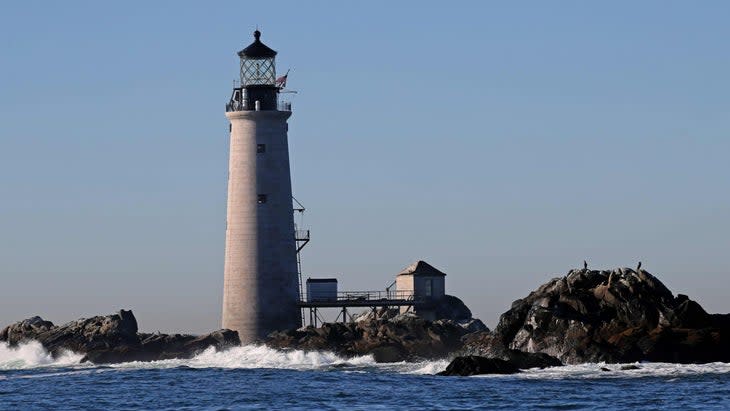
"We cut off the cabin and converted it into a barge to haul heavy materials out to Graves," says Waller, referring to the historic lighthouse he owns. You have to be pretty creative to live in an offshore lighthouse in the first place. Waller has been coming here from his home in Malden at least twice a month for eight years.
At the mooring a few hundred feet out from the station, we hop into the dinghy, his sixth--the sea took all the others--and from the stern I look at Waller, 59, in his thick-rimmed black and gray specs under a matching beanie rolled above his ears, rowing in galoshes and yellow waterproof fishing suspenders. Arriving, we balance on periwinkles and barnacles to step from the dinghy onto a jetty, tie up to a piling, and walk 40 feet on slippery rocks to the base of the lighthouse. That's when I look up, and realize we're only halfway to the entrance.
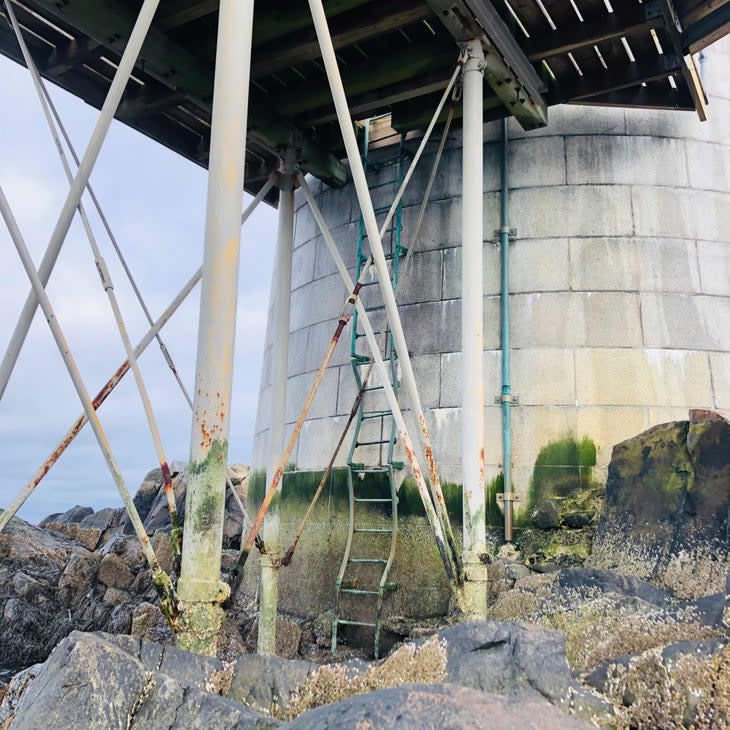
Exactly 40 feet overhead, like something from a dizzying Escher painting, is the maroon door to his second home, Graves Light Station. It's 36 degrees out, and the sweeping waves splashing up make the scene even more surreal. The original 1905 iron ladder, corroded in aqua that matches the sea, runs from the granite under my feet from sea level up a tight parallel against the side of his 113-foot lighthouse.
"We're climbing up this?" I ask, as if it's not obvious.
Midway up the steep tower sits a bridge that he rebuilt last summer, an exact copy of the original from 1905, but raised up 27 feet, hoping that this one will withstand storm waves that get wilder every year. It's Graves' third bridge--the first one washed away in the Blizzard of 1978; the second was destroyed in the "Perfect Storm" (as titled in the book and movie) of 1991.
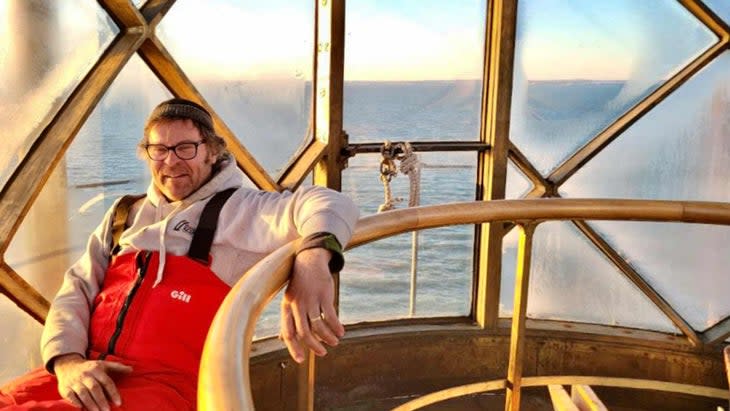
In my winter gloves, treadless rubber boots, ski pants, and a life jacket, I climb, pausing on each step to prevent my forearms from seizing up in the cold. At the bridge, I can finally move laterally, my soles sinking into the planks, and I tell Waller, with only 13 feet left, "I don't like heights." We cross the bridge to the former oil room he turned into a guest house.
The Graves project may be the most elaborate and celebrated lighthouse restoration in history. Next summer Waller, who has been awarded by the American Lighthouse Foundation for his work in preservation, will finally finish the near unimaginable with the installation of a rare antique first-order Fresnel lens with the refracting glass once commonly used to intensify light for mariners. But when you own a lighthouse, the repairs are never really done.
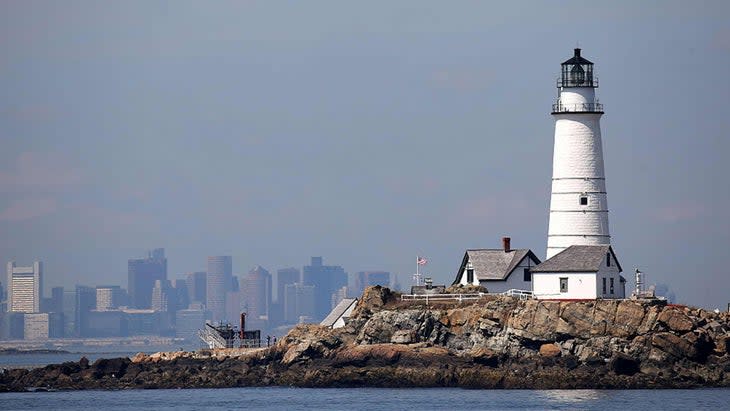
We walk the fresh pale planks, turn around, and I see it ... why Waller would throw down the most money--just shy of a million dollars--ever spent privately on a lighthouse. Breathing the salty clean winter air, out in the middle of the harbor, we stand in front of his time machine. The lighthouse towers overhead, tall and proud and quiet, like an ode to maritime history. Gulls circle round in clear skies, and time slows. I haven't looked at my phone since we left.
"When you’re out here, the whole world stops, as far as you’re concerned," says Waller. "It's peaceful. I heard a plane just now, but there’ll be days when there's just the rise and fall of the tide and the wind."

We've all stopped to take a picture of these icons, lighthouses, at some point, but in another 50 or 100 years we might not be able to. No longer used as a main navigational aid, the lighthouse as we know it is slowly being rendered obsolete. Navigation has largely transitioned to mariner-operation systems. Vessels mostly use satellite, GPS, and radar to dodge rocks, avoid the bottom of the ocean or bay, and dock safely in a harbor, even if some--especially small boats--still rely on lighthouses as visual aids, like buoys. After the events of 9/11 over a decade ago, without a primary need, government lighthouse maintenance funds were absorbed during the incorporation of the Coast Guard into homeland security, leaving enough only to maintain the automated lights and foghorns.
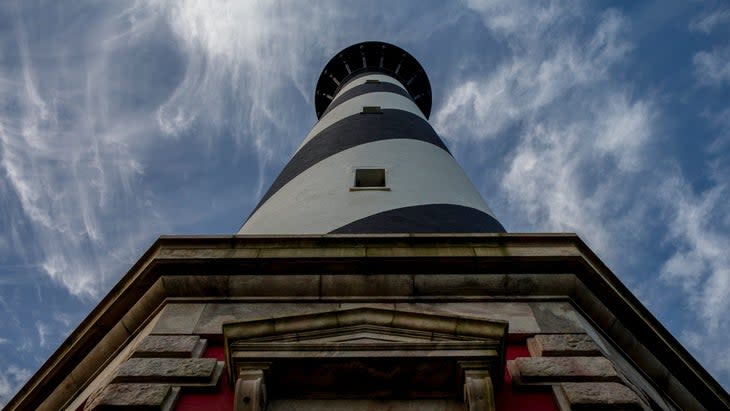
The 2000 National Historic Lighthouse Preservation Act was established to maintain these historic structures, saving many, including Graves. But for an increasing number of individuals, nonprofits, and municipalities, the upkeep of the aging and often remote towers seems practically impossible against rising seas and ruthless corrosion. When the Coast Guard, which now owns only a small percentage of lighthouses, no longer needs a lighthouse, the National Historic Lighthouse Preservation Act facilitates a transfer with right of first refusal, at no cost, to a public or nonprofit organization. The catch? The act sets a high bar for ongoing and pricey preservation and education. When there are no takers in this phase, private owners like Waller go to bid on lighthouses through public auctions. To date, 82 lighthouses have been transferred to public entities and nonprofits, and 66 have been sold for $8.2 million total. And, unless a lighthouse is decommissioned, the Coast Guard must be granted access to keep all the automated lights shining for those few mariners still looking for a guiding light.
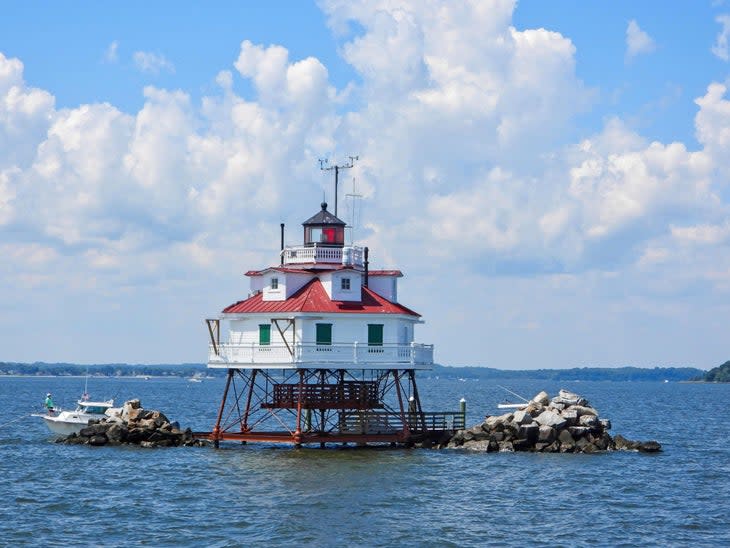
We make our way on up the tower, where Waller shows me the original blueprints of Graves, then pulls out ledgers containing 800 pages of old keepers' logs, handwritten in India ink and printed by the U.S. Lighthouse Service. The entries range from the weather-- "40 degrees, light rain in the morning" to more compelling matters: "Captured a rowboat full of German sailors in the fog, held them until Navy picked them up three days later. Asked Navy to reimburse us for their food; Navy refused." The Germans had been spies mapping the harbor in World War I.
In 1910, a keeper named Elliot Hadley described the conditions he saw during a storm: "I’ve looked up at solid water rushing in toward the ledges. I don’t know how far up the solid water comes. I’ve been knocked down by it on the wharf beside the light, and opening a window to look out more than halfway [65 feet] up the tower, I’ve had as much as three buckets-full dashed in my face."
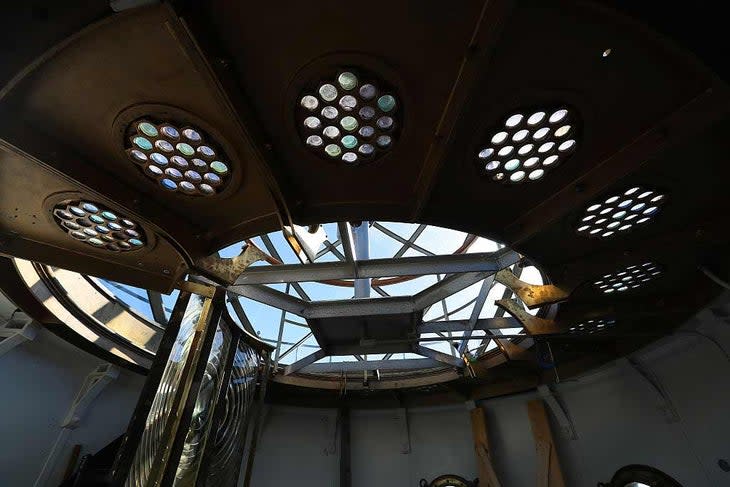
I ask Waller if he ever imagines himself as one of the lightkeepers. He says no. But he acknowledges his new role, and its uncertainty.
"If I didn’t exist, the ships wouldn’t be crashing into the rocks," he says, deadpan with his eyes to the floor.
Waller is recognized as an expert and has been an advocate for restoration, appearing in The Last Lightkeeper, an Amazon documentary released late last year. The film, also starring the lighthouse historian Jeremy D'Entremont and Ford Reiche, who took on a similar extensive restoration of the Halfway Rock Light Station, in Casco Bay, Maine, is directed by Rob Apse, with a portion of the proceeds preserving Whaleback Lighthouse, at the mouth of the Piscatequa River in Kittery, Maine.
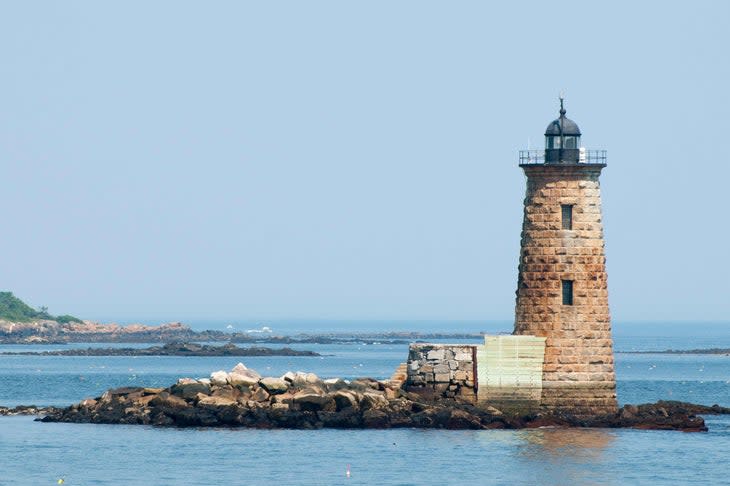
Crossing back over the bridge, we make our way up: five spiral clangy metal flights; past a bunk room, the keeper's quarters, and a third-floor kitchen; and to the lantern room. In the old days, a light keeper lit the lens and hand-cranked weights to rotate the light, each sending out an identification signal or pattern--Graves's is two white flashes every twelve seconds--to guide mariners to shore, back where we came from in East Boston. A keeper would clean the light, and anything short of meticulous was unforgivable. Constant maintenance was their calling. "At the cost of your own life, you would keep that light lit," says Waller. They were relied upon and honored. "It was above being a captain of a ship, because you were the guardian of all the ships," he adds. Keepers were by-the-book, sober, carefully chosen men. One exception is the country's actual last official lightkeeper still working for the Coast Guard: Her name is Sally Snowman, and her job and second home, Boston Light, are in jeopardy. From the top deck of Graves tower, Waller points two miles south to Little Brewster Island, home only to Boston Light, the first lighthouse in the United States, built in 1716. Snowman is the only female in history among the 69 others to keep Boston Light.
The Coast Guard, once mandated by Congress to staff and operate Boston Light permanently, has greenlit a search for a new owner through the National Historic Lighthouse Preservation Act. "In spite of Boston Light’s historic importance, it will be a huge challenge for the next steward to preserve the station," says Jeremy D'Entremont, when I later reach him inside New Hampshire's Portsmouth Harbor Light, home of the American Lighthouse Foundation's local chapter. "Every year storms seem to do more damage." The glacier land (called drumlins) under both the tower and the keeper’s house, where Snowman, 71, lived half the year for almost 20 years maintaining the place and giving tours, is shrinking.
When I reach Snowman at her home base in the Boston suburb of Weymouth, she tells me, "We're seeing the most erosion down in the valley in between them. The valley is getting smaller as the ocean is getting closer. When we have high tides with big storms, we actually become two islands." The damage has limited public access in recent years, and at the bottom of the cliff below the lighthouse, rock-filled cages, used as protection from erosion until they were ripped out of the ground in 2018 by a storm, roll around like tumbleweeds--making the future of Boston Light even more ominous.
Local nonprofits and people in the public sector have begun exploring an ownership transfer of the historic landmark through the 2000 act. "Dave has done such wonderful things with his lighthouse," says Snowman. "That’s what makes me optimistic that the right entity is out there to work that kind of magic on Boston Light." She and some lighthouse preservationists hope Boston Light will go to the National Park Service, especially since the station is located within the Boston Harbor Islands National and State Park Area, but there's no telling what will happen over the next year or two. "I sincerely hope Sally will play a role in its next chapter," says Waller of his longtime neighbor.
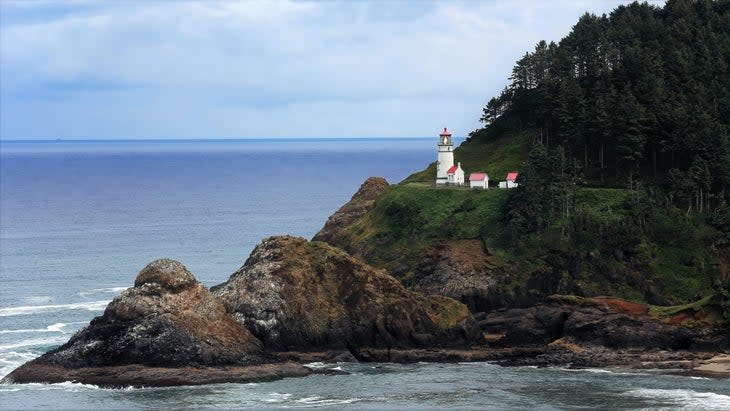
For Waller, who owns a special effects company in Boston, restoring the lighthouse and its artifacts is a continuum of problem-solving. It's finding ways to reverse 40 years of dark and dirty neglect--1970s linoleum curling up over rotted wood, rusted metal walls, wilting sheets of paint. It means tracking down plumbing to shoot water 96 feet up to the kitchen, and replacing rusting cast-iron stove burners with noncorrosive brass because the salt air rusts everything, even inside. It takes an extra level of patience to piece together 594 handmade glass prisms from Chicago and Australia, dating back 100 years, to form a two-ton incandescent oil-vapor Fresnel lens almost identical to the original now sitting in the Smithsonian, and once one of the brightest in history at 375,000 candlepower. "We always find the answers by asking how they did it back in the day. You realize they had it all figured out long ago," says Waller, now a pro at finding the right tools and the right people. He even salvaged a stanchion railing from a World War II minesweeper for the mahogany deck.
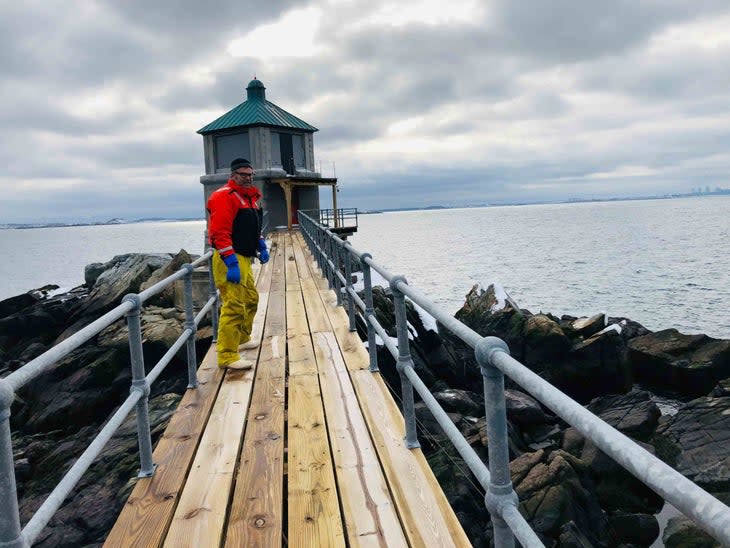
His first renovation was his Malden home, a 10,000-square-foot Queen Anne style firehouse that had nearly burned to the ground when he and his wife, Lynn, bought it from the town for $32,500. For the Graves lighthouse, Waller dove in again, pinching pennies. When he ran out of money a year into the renovation, he teamed up with another original bidder who matched his million, a local businessman named Bobby Sager, who has hosted celebrities like Sting and Tom Hanks at Graves. Sager is now fixing up two more lighthouses (Minot's Ledge Light south of Boston and Maine's Boon Island Light) he landed at auction when they were offloaded by the Coast Guard.
"If you apply too much logic to it--look at the cost, the resale, and the amount of work--it doesn't make sense," says Waller. "You can’t determine those things, they're unknown. I think that’s what attracted me to Graves and to other things in my life. I don’t have to fill in all the boxes before I decide to do something, for better or worse."
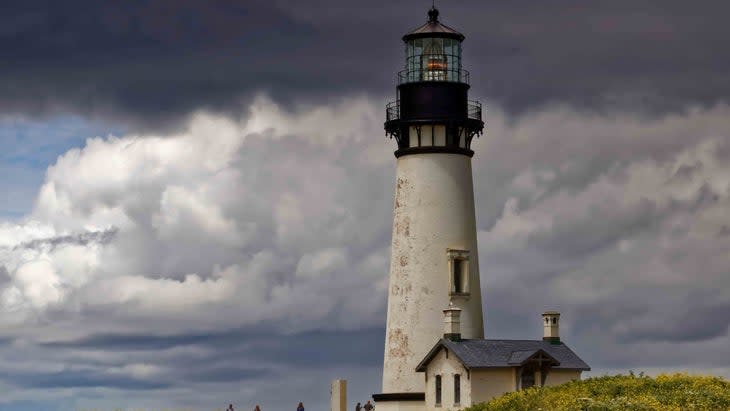
Meanwhile the numbers of lighthouses are declining. About 100 years ago there were more than 1,000, according to the U.S. Lighthouse Society, and now 850 are still standing.
"The Coast Guard has already divested the vast majority of offshore lighthouses," says D'Entremont. "Eventually, they will probably divest of almost every lighthouse property, with a few exceptions."
D'Entremont predicts that in 50 years only a small number of lighthouses, if any, will still be used for any navigation. "As far as the preservation of lighthouses as historic monuments, I’m optimistic about the ones that are tourist attractions being saved," he says. "I’m not nearly so optimistic about the ones that are remote and inaccessible to the public, many of which will eventually face demolition by neglect."
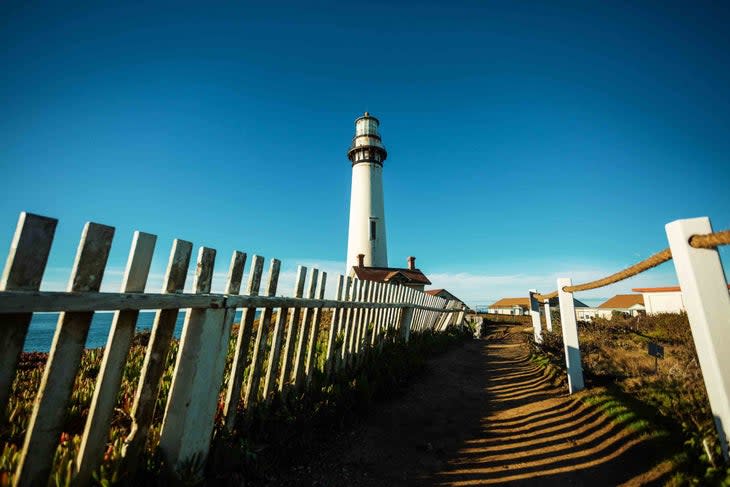
Many land-based lighthouses and the soil around them are contaminated with lead paint that must be remediated before someone saves them. Add climate change to the mix, and we’re going to lose a significant number of lighthouses in the coming decades. Some sit submerged under the waters of the Chesapeake Bay or are about to topple over in the Great Lakes. With no takers and erosion at its base, the 86-foot Kauhola Point Lighthouse in Hawaii was demolished altogether in 2009. Some have been preserved by gigantic efforts: Already Cape Hatteras in North Carolina, the tallest lighthouse in the country at 193 feet, and Gay Head Light on Martha's Vineyard, among others, have been physically moved back from the edge of the sea, a painstaking process involving digging up the foundation and rolling it inland on hydraulic beams. (See this video of the Gay Head "rescue.")
Waller and I gaze from the top deck through the windows of his seaswept kingdom at the shoreline towns, historic shipping ports that arose here in the first place because of the water, and we look toward Boston Light. "They always say the best government is a benevolent king because his heart is in the right place," he says. "Everything gets done according to what he wants. But what happens when the king dies?
"Fortunately for Graves, we really care a lot about it."
Sleep in a lighthouse or keepers’ quarters
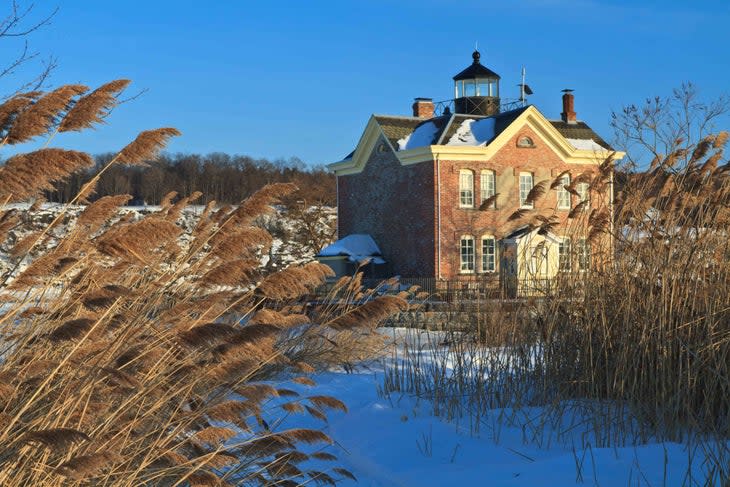
Saugerties Lighthouse, New York
Borden Flats Lightstation, Massachusetts
Rose Island Lighthouse, Rhode Island
Heceta Head Lighthouse, Oregon
Big Bay Point Lighthouse, Michigan
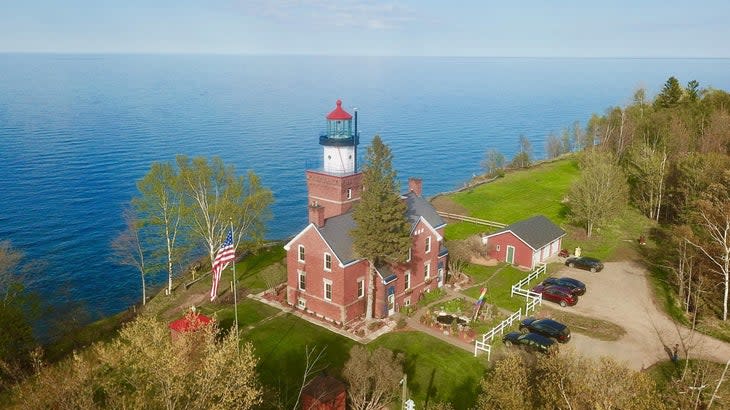
Pigeon Point Lighthouse, California
Fanad Head Lighthouse, Ireland
Harlingen Lighthouse Hotel, Netherlands
Tour a lighthouse:
Chesapeake Bay Lighthouse Tour
Northern California Lighthouse Tour
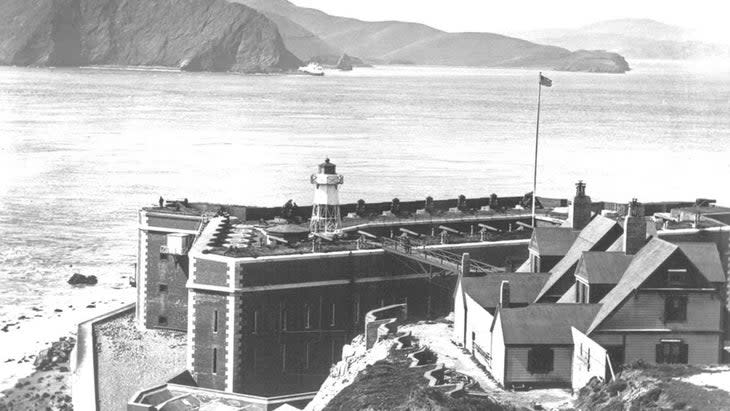
To learn more about lighthouses:
Go to United States Lighthouse Society
American Lighthouse Foundation,
For exclusive access to all of our fitness, gear, adventure, and travel stories, plus discounts on trips, events, and gear, sign up for Outside+ today.

